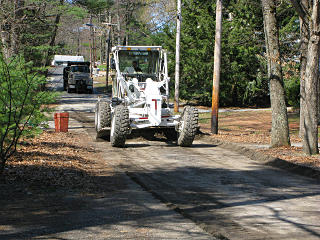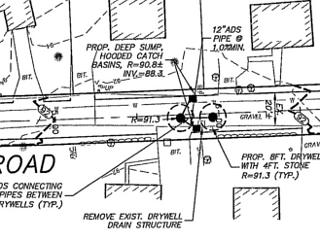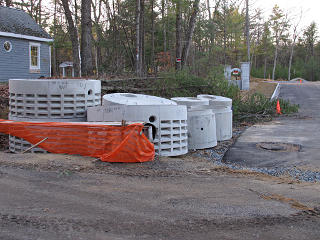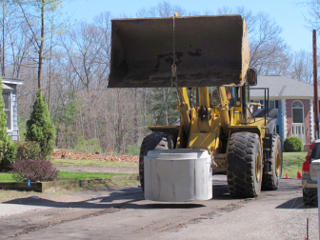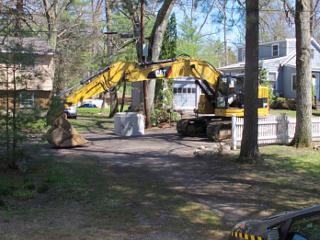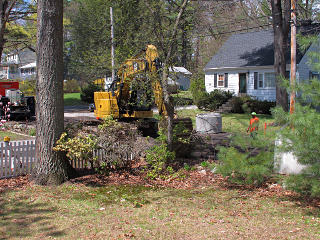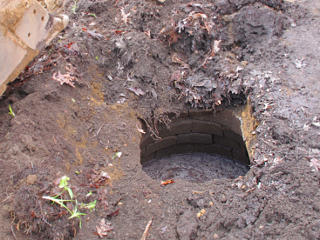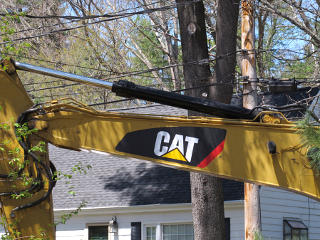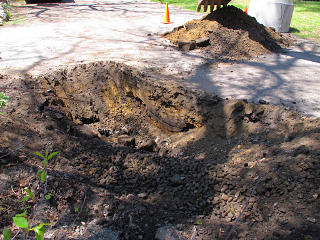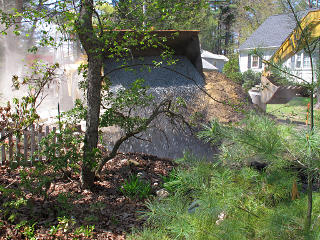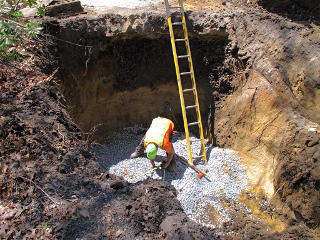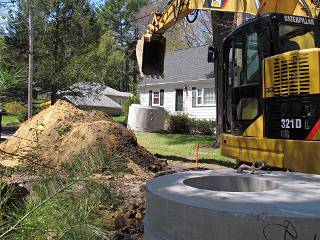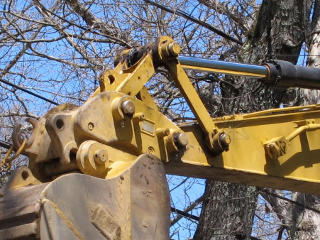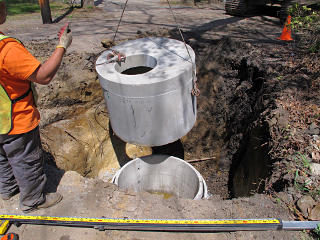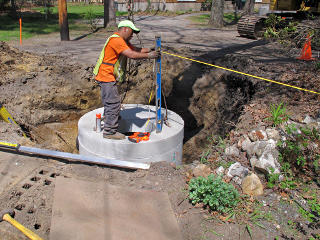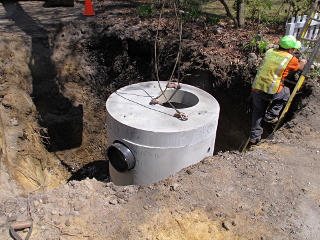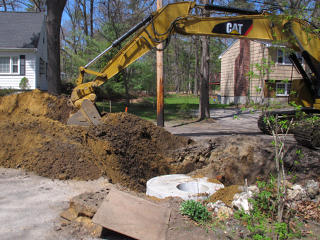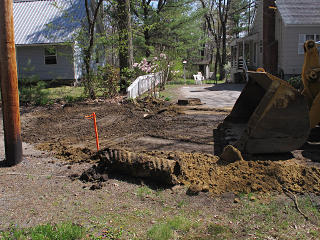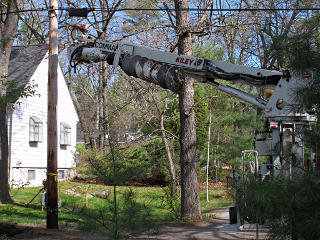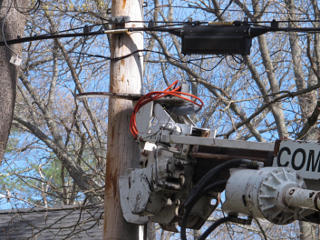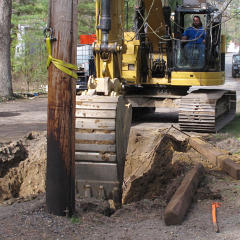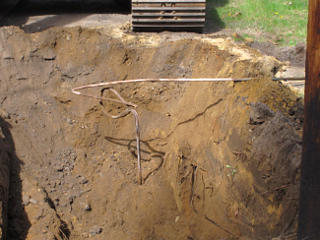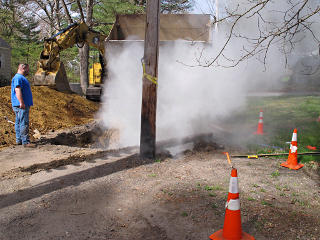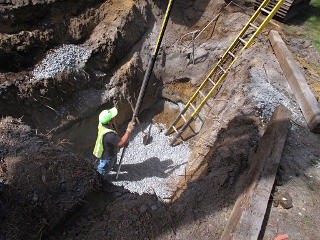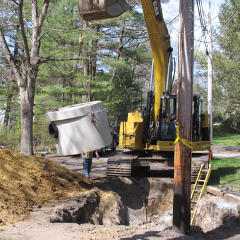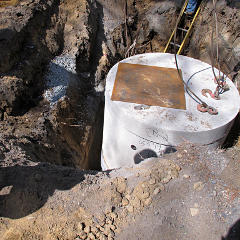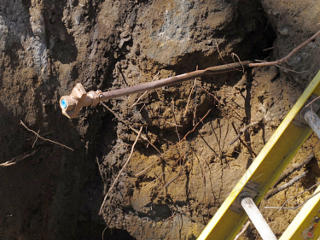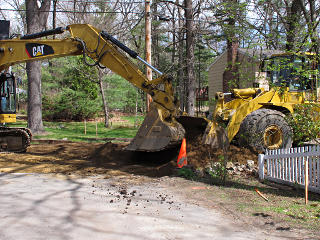|
Over many of our objections, the town planning commission voted to approve
the upgrade plan basically because they'd get a paving job for free.
The developer wanted it done and would fund this piece even though
it lay in a different *town* from his subdivision -- as the only vehicle
access it would still pretty much make sense for the potential increase
in traffic. Thus we failed to use disapproval of this as a wedge to impede
the rather unpopular subdivision itself, but it was definitely thought of.
Long story short, we the peasants brought our pitchforks and torches
to a lot of planning hearings over the years, ultimately to no avail.
So it eventually came time to engineer the improvement, and our town
asked for a solid, durable design for it. Changing to an impermeable
surface would affect all the drainage characteristics, especially for
water flowing down the gentle hill, so stormwater management was key.
As the nearest land lower than the street was a wetland preserve that
already had zero drainage, they weren't going to send it there. The
only other choice was sufficient volume of deep soil infiltration to
basically just make all the water go away. Including the amount that
could be anticipated to come in the typical "hundred year event".
|
